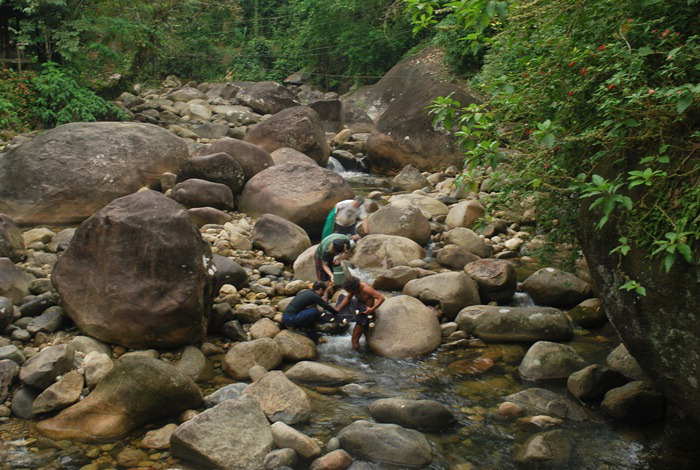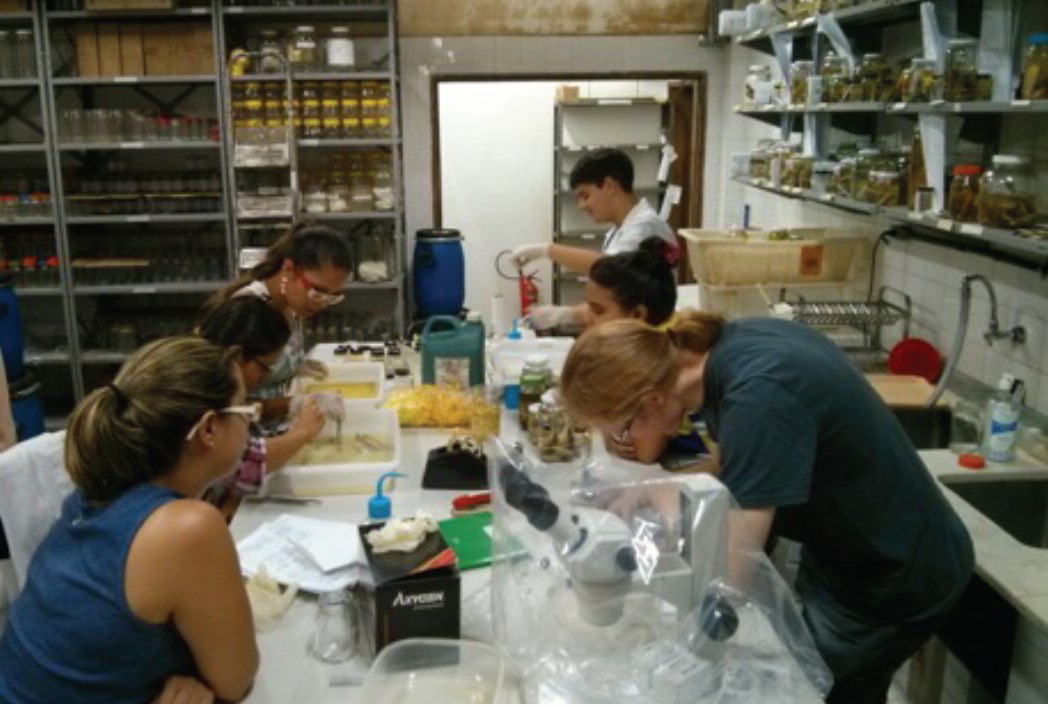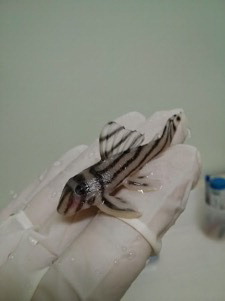This project was completed as of December 31, 2016, and the PI Dr. Parente reports a wide range of results achieved over its three-year duration. During the first year of the project, he and his team carried out field excursions to the Brazilian Amazon and rain forest areas, resulting in the sampling of more than 300 individual fish belonging to 99 species of Loricariidae and a few other catfish families to be used as outgroups. They extracted total RNA and synthesized cDNA for 56 species, but as stated in their first annual report, “from all the collected species, we could amplify by PCR and sequence by the Sanger method the CYP1A from only seven species.” Thanks to the accessibility of next-generation high-throughput sequencing technology, as well as to the drop in the cost of this sequencing, the PI decided to change the sequencing method from the traditional Sanger to the Illumina HiSeq2500. This, however, was not just a mere methodological change. Instead of sequencing 200 genes, the researchers sequenced the entire set of expressed genes in the liver of 34 species, totaling hundreds of thousands of genes.
The first sequencing batch of transcriptomes was done at the end of the first year of this PEER project, but it was during the second year that most of the transcriptomes were sequenced (a total of 40 liver transcriptomes from 34 species). Six additional non-hepatic transcriptomes were sequenced for the endangered species
Hypancistrus zebra. Despite intensive sample preparation and sequencing, the second year was mainly devoted to analyzing the data generated from the first batch of transcriptome sequencing and writing manuscripts describing the results obtained. In this first batch, nine liver transcriptomes belonging to three genera (three fish per genus) were sequenced:
Ancistrus spp., Pterygoplichthys anisitsi, and
Corydoras nattereri. The team has begun analyzing the transcriptomes of
P. anisitsi, with a focus on gene families involved in organismal defenses to chemical threats, the so-called defensome. Although these were their first results, the manuscript describing it was the last one to be published (
Marine Pollution Bulletin, 2017) due to the complexity of the data analyses involved. Approximately 5% of the transcriptomic data from the other two species (
Ancistrus spp. and
C. nattereti) were used to reconstruct their mitochondrial genomes. The manuscripts describing these findings have also been published (
Gene, 2015, and
Neotropical Ichthyology, 2016).
The third year of the project was marked by intensive data analysis, manuscript writing, and personal developments for all the Brazilian staff directly involved in this project, as natural consequences of the PEER grant. Computational biologist Daniel Moreira was accepted as a PhD student in the graduate program of Systems and Computational Biology at the Oswaldo Cruz Foundation. PI Thiago Parente was accepted as a collaborator professor and received a three-year postdoctoral grant at the same graduate program to act as Daniel’s supervisor. Later, the two undergraduate students in the group, Maithê Magalhães and Paula Andrade, were also accepted at the Master’s level at the same graduate program under Dr. Parente’s supervision. The analyses carried out by each of these three students resulted in manuscripts co-authored with the PI. Two of these manuscripts have been published (Moreira et al., 2016, in
Mitochondrial DNA, and Magalhães et al., 2017, in
Conservation Genetics).
 |  |
The research team at the Andorinhas waterfall on the Roncador river in the district of Santo Alexio.
Pictured are Paolo Buckup (top), Emmanuel Neuhaus (center), Thiago Parente (left foreground), and Jose Gomes (right foreground). (Photo: Carla Quijada). | Labwork to obtain sequencing of genes (Photo: Dr. Parente).
|
Although this PEER grant has now ended, the results produced under the project will continue to be analyzed for some years to come. Despite the intense work in data analysis, so far the PI and his team have been able to process the mitochondrial genomes of all sampled species (about 5% of the complete dataset), one gene family in all sampled species (about 1% of the complete dataset), the complete liver transcriptome of one species (about 3% of the complete dataset), and the partial liver and extra-hepatic transcriptomes of four species (about 6% of the complete dataset). By these over-estimated values, only about 15% of the total data produced have been analyzed. Based on previous experience with analyzing the
P. anisitsi transcriptome, the PI expects that the on-going analyses and those to come in the near future will be more complex, but they should be even more significant and relevant. As these new results are published, likely in even higher impact journals, Dr. Parente expects to engage the Brazilian environmental authorities more intensively in order to recommend implementation of conservation and pollution monitoring practices. In the meantime, results from this work have contributed to the creation of a new course to be offered in the graduate program of Computational and Systems Biology of the Oswaldo Cruz Foundation, entitled “Transcriptomes: from reads to results.” It will be offered for 20 graduate students during the second semester of 2017.
The current members of the PEER team have been granted fellowships from Brazilian government agencies in order to continue the work begun under this project. Dr. Parente has a postdoctoral fellowship until May 2019, Mr. Moreira has a PhD fellowship until March 2018, Ms. Magalhães has a Master’s fellowship until March 2018, and Ms. Andrade has a two-year Master’s fellowship that will begin in early 2017. Most of the urgent work is focused on data analysis, so no funds other than these fellowships will be needed. However, several interesting questions have already been raised, so the team is considering applying for additional grants from national and international agencies to fund new experiments over the next years.
Back to PEER Cycle 2 Grant Recipients 





